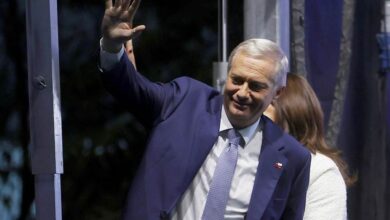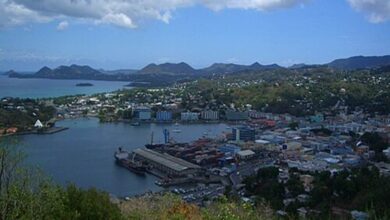What Options Does Pedro Castillo Have to Overcome the Political Crisis?
The political crisis in Peru has not allowed him to govern calmly for even a minute. What outlets does Pedro Castillo have?

Photo: Presidency of the Republic of Peru
LatinAmerican Post | Santiago Gómez Hernández
Listen to this article
Leer en español: ¿Qué opciones tiene Pedro Castillo para superar la crisis política?
Peru is a country of “perpetual crisis”, this is how Spain's newspaper El País described the country's situation. The Andean nation has had its presidents and opposition political leaders go to jail for decades, and has had 6 presidents in less than 8 years. Today Pedro Castillo, the current president, has not been able to govern calmly.
Castillo faces fierce opposition in Congress that has prevented him from governing without impeachment proceedings, or that prevents him from leaving the country. This was known from the moment he won the elections in the first round. In such a fragmented Peru, no candidate arrived with control of the equally divided parliament. This is why from the first moment Pedro Castillo arrived at the Government Palace he encountered constant instability. Today he is facing investigations (but not accusations) for corruption against him and accusations against relatives and close officials. This has triggered a wave of protests against him.
It may also interest you: A new beginning on the international stage for Nicolás Maduro
However, the crisis is not manifested only against President Castillo. The protests last week were made by citizens related to the current government and against Congress. Peruvians have a great distrust of political institutions; not only against Castillo. In the latest Ipsos survey, published in El Comercio, it is noted that 73% of Peruvians disapprove of Congress, while 66% of citizens are against the head of government.
What Outlets Does Pedro Castillo Have?
Negotiation
The main option would be for Castillo to cede a large part of his governance and posts. However, for him to agree with the opposition and thus be able to finish his mandate calmly seems unthinkable. First, because it would be giving oxygen to a president who seems more and more lonely and up to his neck in water. In addition, both the government and the parties have been building discourses in opposition to the other, and to end up allying would be to betray their bases.
Calling New Elections
In countries with parliamentary regimes, when a government does not find governability, it is normal to advance elections. In presidential models, the story is different. However, perhaps today in Peru, the healthiest solution could be this. With a president and Congress so criticized, giving citizens a voice again may be the best alternative. Now, the question is how to call both elections from the presidency.
However, this has already happened in the immediate past. Given the serious institutional crisis that caused the departure of Martín Vizcarra, both the executive and the legislature agreed to advance the elections a year earlier (2020). It was precisely the way that brought Pedro Castillo as a president and an equally fragmented Congress.
Full Congressional Showdown
The president of Congress recently accused Pedro Castillo of planning to shut down Congress. José Williams, leader of the Peruvian legislature, warned that (supposedly) the government is planning to close the Congress of the Republic as a way out of the crisis.
This accusation comes after the president of the Council of Ministers of Peru asked Congress for a matter of confidence. This is a constitutional mechanism that, if denied twice, the president can dissolve parliament.
Should Castillo succeed in dissolving Congress, this would not resolve the political crisis in Peru. Quite the contrary, it could increase it. In a country that experienced a self-coup at the hands of Alberto Fujimori, one of these measures by an unpopular president could end up adding gasoline to the fire. Instead of resolving the political crisis in Peru, what it would do is aggravate it.




